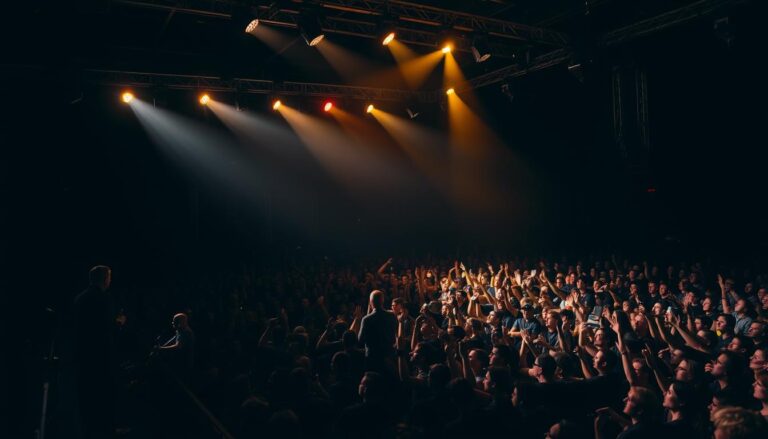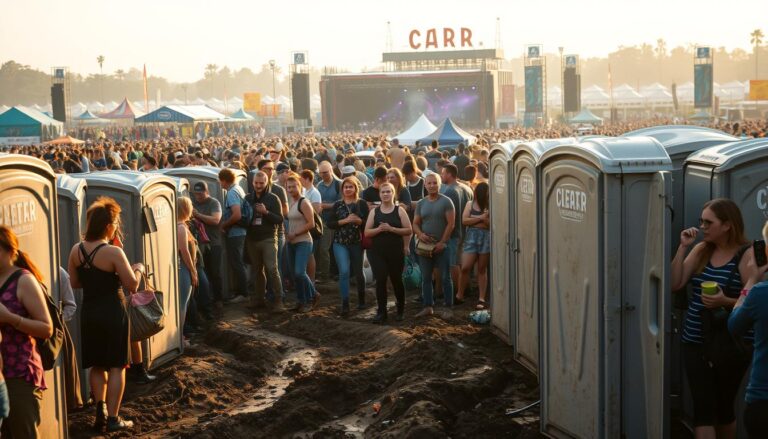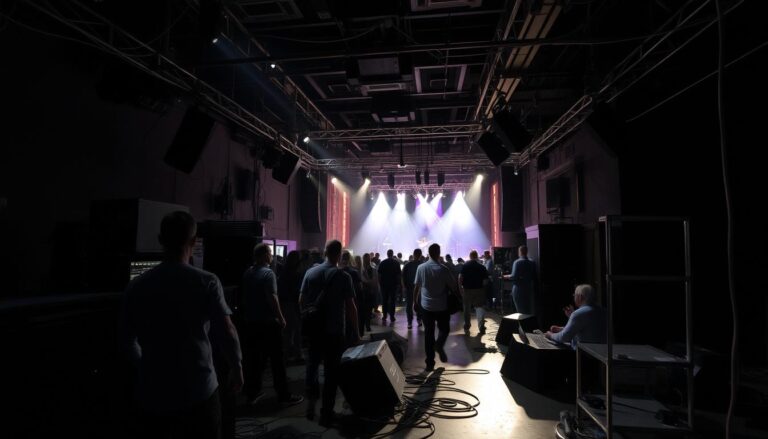Attending a live music event can be an exhilarating experience, but the quality of sound can make or break the show. The acoustic characteristics of a venue play a significant role in determining the overall sound quality.
Different venues have unique acoustic properties that can affect how sound waves travel and are perceived by the audience. Understanding these factors can help you choose the best spot to enjoy the performance. In this comprehensive guide, we’ll explore the key considerations for selecting the optimal seating or standing position to maximize your live sound experience.
Key Takeaways
- Understand how venue architecture impacts sound quality.
- Learn how to choose the best seat or standing position.
- Discover the factors that affect sound wave propagation.
- Maximise your live sound experience with our expert tips.
- Explore the importance of venue layout in sound quality.
The Science Behind Concert Acoustics
Concert acoustics is a fascinating field that combines physics and music to create an optimal listening experience. The way sound behaves in a concert venue is influenced by several factors, including the shape of the room, the materials used in its construction, and the presence of reflective or absorptive surfaces.
How Sound Travels in Enclosed Spaces
Sound waves travel in all directions from their source, bouncing off surfaces and interacting with the venue’s architecture. In enclosed spaces, sound can become complex, with reflections and echoes affecting the overall sound quality. Understanding how sound travels is crucial for optimizing the concert experience.
Reflection, Absorption, and Diffusion Explained
Reflection occurs when sound bounces off a surface, while absorption happens when sound is absorbed by a material, reducing reverberation. Diffusion involves scattering sound in various directions, creating a more even sound field. These factors work together to shape the sound you hear at a concert.
The Impact of Room Shape and Materials
The shape and materials of a concert venue significantly impact its acoustics. For example, a rectangular room with hard surfaces can produce a lively, reverberant sound, while a room with absorbent materials can result in a drier, more intimate sound.
| Venue Feature | Effect on Sound |
|---|---|
| Hard surfaces | Increased reverberation |
| Absorbent materials | Reduced reverberation |
| Rectangular shape | Lively, reverberant sound |
By understanding these factors, concert-goers can make informed decisions about their seating choices, enhancing their overall sound experience.
Understanding Your Venue Acoustics Seat Guide
When attending a concert or live event, understanding your venue acoustics seat guide can significantly enhance your overall experience. A well-informed choice can mean the difference between an enjoyable evening and a mediocre one. By knowing how to read the venue layout and seating chart, you can make an educated decision about where to sit.
Reading Venue Layouts for Acoustic Advantages
Venue layouts are designed to optimize the acoustic experience, but understanding the intricacies can be challenging. Look for areas with minimal sound reflection or absorption. Typically, seats near the center of the venue offer a more balanced sound.

Decoding Seating Charts Beyond Row Numbers
Seating charts provide more information than just row numbers. They can indicate the proximity to the sound source, the angle of the seat relative to the stage, and potential sound obstructions. Paying attention to these details can help you choose a seat with optimal sound quality.
The Relationship Between Ticket Price and Sound Quality
Generally, more expensive tickets are closer to the stage, but this isn’t always a guarantee of better sound. Factors such as the venue’s acoustic design and the type of event can influence sound quality. It’s essential to consider these factors when choosing your seat.
| Ticket Price Range | Typical Seat Location | Sound Quality Expectation |
|---|---|---|
| $50-$100 | Upper levels or further from the stage | Good, but may experience some echo or delay |
| $100-$250 | Mid-level, relatively close to the stage | Better sound balance, less echo |
| $250+ | Front rows or premium areas | Optimal sound quality, minimal echo or distortion |
Indoor Concert Halls: Finding the Acoustic Sweet Spots
When it comes to indoor concert halls in Australia, few venues stand out like the Sydney Opera House for their acoustic excellence. The country’s premier concert venues are designed to provide an exceptional sound experience, but understanding their acoustic characteristics can further enhance your concert-going experience.
Sydney Opera House: Section-by-Section Analysis
The Sydney Opera House is a masterpiece of modern architecture and acoustics. Its Concert Hall, with its distinctive sail-like design, is particularly renowned for its acoustic qualities. The hall’s design incorporates various acoustic features, including a reflector overhead that enhances the sound experience by projecting it towards the audience. When seated in the Concert Hall, the sound is rich and immersive, making it a must-visit for any classical music enthusiast.
Melbourne Recital Centre’s Acoustic Design
The Melbourne Recital Centre is another Australian venue celebrated for its acoustic design. The centre’s Elizabeth Hall features a unique vineyard-style seating arrangement, which not only provides an intimate setting but also optimizes the sound distribution. This design ensures that the sound is evenly dispersed throughout the hall, creating a captivating experience for the audience.
Regional Australian Concert Halls Worth Visiting
Beyond the major cities, regional Australia is home to several concert halls that are worth visiting for their acoustic qualities. Venues such as the Queensland Performing Arts Centre and the Adelaide Festival Centre offer world-class acoustics in their concert halls. These venues host a variety of performances, from symphony orchestras to contemporary music acts, each benefiting from the carefully designed acoustic environments.
Understanding the acoustic characteristics of these indoor concert halls can significantly enhance your sound experience at concerts. By choosing the right seat and appreciating the venue’s acoustic design, you can enjoy a more immersive and engaging performance.
Arena and Stadium Acoustics: Navigating Large Venues
When it comes to enjoying live music at arenas and stadiums, understanding the acoustics is key to an optimal sound experience. Large venues present unique challenges, but with the right knowledge, you can significantly enhance your concert experience.
Rod Laver Arena and Qudos Bank Arena Sound Mapping
Venues like Rod Laver Arena and Qudos Bank Arena are iconic concert destinations in Australia. Understanding their sound mapping can help you choose the best seat. For instance, seats closer to the stage often provide a more immersive experience, while seats further back may offer a more balanced sound.

Dealing with Echo, Delay and Sound Bleed
Common issues in large venues include echo, delay, and sound bleed. To mitigate these, consider the following concert seating tips:
- Opt for seats that are not too far from the stage to minimize delay.
- Choose seats in areas with sound-absorbing materials to reduce echo.
- Be aware of speaker placement to avoid sound bleed.
When to Choose Upper vs. Lower Levels for Different Performances
The choice between upper and lower levels depends on the type of performance. For instance, for rock concerts, lower levels can provide a more energetic experience, while upper levels might offer a clearer sound. For classical performances, upper levels can sometimes provide a more nuanced sound experience due to the height and angle relative to the speakers.
By understanding these factors and applying some sound experience concerts tips, you can significantly enhance your enjoyment of live music in large venues.
Theatre and Small Venue Sound Optimization
Optimizing sound in theatres and small venues requires a nuanced understanding of venue acoustics. For music lovers and performers alike, knowing how to navigate these spaces can significantly enhance the overall experience.
The Enmore Theatre, Forum Melbourne and Other Iconic Venues
Iconic venues like The Enmore Theatre and Forum Melbourne are renowned for their excellent acoustics. The Enmore Theatre, with its rich history and intimate setting, offers a unique sound experience that is highly regarded by both artists and audiences. For instance, the acoustic design of these venues plays a crucial role in delivering high-quality sound.
Balcony vs. Orchestra Seating: Pros and Cons
When it comes to seating, the debate between balcony and orchestra seating is ongoing. Balcony seating can offer a broader perspective on the performance, with sound reflecting off the walls to create a more immersive experience. On the other hand, orchestra seating provides a more direct connection to the performers, with sound traveling a shorter distance. However, seats near the sides or back may suffer from sound distortion.
Corner Spots and Dead Zones to Avoid
Certain areas in theatres and small venues are known to have poor acoustics. Corner spots can cause sound reflections that distort the audio, while dead zones may absorb sound, resulting in a dull listening experience. Being aware of these areas can help you choose your seat more wisely, ensuring a more enjoyable experience.
For more insights on optimizing your concert experience, consider exploring resources that specialize in venue acoustics and soundproofing techniques.
Outdoor Festival and Concert Sound Tips
For music lovers attending outdoor festivals, understanding the venue acoustics is crucial for an optimal sound experience. Outdoor events like Splendour in the Grass and Falls Festival offer unique challenges and opportunities for sound engineers.
Splendour in the Grass, Falls Festival and Sound Positioning
Major outdoor festivals in Australia employ sophisticated sound positioning strategies to ensure that the audience enjoys high-quality sound. For instance, Splendour in the Grass uses a multi-stage setup with carefully positioned speaker towers to create an immersive sound experience.
Speaker Tower Triangulation Techniques
One of the key techniques used in outdoor sound engineering is speaker tower triangulation. This involves positioning speaker towers in a triangular formation to ensure even sound distribution across the venue. This technique helps to minimize echo and sound bleed, providing a clearer sound experience for the audience.
Weather Effects on Outdoor Acoustics in Australian Climate
Australia’s diverse climate can significantly impact outdoor acoustics. Weather conditions such as high temperatures, humidity, and wind can affect sound quality. For example, high humidity can absorb high-frequency sounds, while wind can cause sound waves to distort. Understanding these factors is crucial for sound engineers to adjust their techniques accordingly.
| Weather Condition | Effect on Sound |
|---|---|
| High Humidity | Absorbs high-frequency sounds |
| Wind | Causes sound wave distortion |
| High Temperature | Affects sound wave speed |
By understanding these factors and employing techniques like speaker tower triangulation, outdoor festivals can offer an exceptional sound experience. Whether you’re attending Splendour in the Grass or Falls Festival, being aware of the venue acoustics and sound positioning strategies can enhance your overall concert experience.
Genre-Specific Seating Recommendations
Your music genre of choice can dictate the best seating option for an unforgettable live performance. Different genres have unique sound characteristics that can significantly impact your concert experience.
Rock and Pop Concerts: Balancing Energy and Clarity
For rock and pop concerts, being close to the stage can enhance the energy of the performance. However, being too close can sometimes result in a less balanced sound. Seats near the center of the venue often provide the best balance between energy and sound clarity. For instance, at venues like the Rod Laver Arena, seats in the lower levels near the center offer an immersive experience with clear sound.
Electronic Music Events: Finding the Bass Sweet Spot
Electronic music events, with their emphasis on bass, require a different seating strategy. The subwoofer placement can significantly affect the sound experience. Generally, being near the center of the venue or close to the subwoofers can enhance the bass experience. At festivals like Splendour in the Grass, attendees often seek seats or standing areas near the main stage where the bass is more pronounced.
Classical and Acoustic Performances: Detail-Oriented Listening
For classical and acoustic performances, the focus is on detail-oriented listening. Seats closer to the stage can provide a more intimate experience, allowing you to pick up on the nuances of the performance. Venues like the Sydney Opera House are designed to offer excellent acoustics, with seats relatively close to the stage being highly prized.
Jazz and Small Ensemble Shows: Intimacy vs. Instrument Separation
Jazz and small ensemble shows often benefit from a different seating approach. While being close to the stage can enhance intimacy, being at an angle or slightly off-center can sometimes improve instrument separation. At venues like the Enmore Theatre, seats that are slightly off-center can offer a great balance between intimacy and sound clarity.
By considering the specific characteristics of your preferred music genre, you can make informed decisions about your seating choice, ultimately enhancing your concert experience.
Technology and Sound: How Modern Systems Affect Seating Choices
As sound technology continues to evolve, it’s changing the way we enjoy live performances and how we choose our seats. Modern sound systems have become a crucial factor in determining the quality of our concert experience.
Line Array Systems and Their Coverage Patterns
Line array systems have become a staple in many modern concert venues. These systems consist of multiple loudspeakers stacked together to provide a consistent sound coverage across the audience area. The coverage pattern of line array systems can significantly impact the seating choices. For instance, areas directly in front of the line array tend to receive a clearer and more focused sound.
In-Ear Monitoring and Sound Reinforcement Evolution
In-ear monitoring has revolutionized the way performers hear themselves on stage, allowing for more precise sound reinforcement. This technology has also influenced how audiences experience sound, as it enables performers to deliver better performances. The evolution of sound reinforcement systems has led to more sophisticated sound checking processes and improved overall sound quality.
Australian Venues with Cutting-Edge Sound Technology
Australia is home to numerous venues that boast cutting-edge sound technology. The Sydney Opera House and Melbourne Recital Centre are notable examples, featuring advanced sound systems designed to optimize the listening experience. When attending a concert at these venues, understanding the sound technology used can help you make informed seating choices.
By considering the impact of modern sound systems on the concert experience, you can make more informed decisions about your seating choices, ensuring a more enjoyable and immersive experience.
Accessibility and Special Considerations
Accessibility in live music venues is more than just a necessity; it’s about creating an inclusive environment where everyone can enjoy the music. This includes considering the needs of attendees with hearing impairments and understanding how different seating options can affect their sound experience.
Hearing Impairment and Optimal Seating
For individuals with hearing impairments, the right seating can significantly enhance their concert experience. Research suggests that seats closer to the sound source, typically near the front, can provide a clearer sound. Additionally, venues with advanced sound systems, such as those using line array technology, can offer a more consistent sound field, benefiting those with hearing aids.
Designated Areas and Their Acoustic Properties
Many venues designate specific areas for attendees with special needs. These areas are often designed to provide optimal viewing and listening experiences. For instance, some venues have sections with enhanced audio features or induction loops that directly transmit sound to hearing aids equipped with telecoils.
| Venue Feature | Benefit for Attendees with Hearing Impairments |
|---|---|
| Induction Loops | Direct sound transmission to compatible hearing aids |
| Enhanced Audio Systems | Clearer and more consistent sound |
| Accessible Seating Areas | Easier access and better sightlines |
How Height and Sightlines Affect Sound Perception
The height of your seat and your sightline to the stage can also impact your sound experience. Generally, being at a higher elevation can improve your view, but the effect on sound perception varies. In some venues, higher seats may be closer to the sound sources (like speaker stacks), potentially enhancing the sound experience.
Understanding these factors can help you choose the best seat for your needs, ensuring a more enjoyable and inclusive experience at live concerts.
Conclusion: Creating Your Personal Venue Acoustics Strategy
Now that you’ve explored the intricacies of venue acoustics, it’s time to put your knowledge into practice. By understanding how sound travels, venue layouts, and the impact of materials and technology, you can make informed decisions about your concert seating choices.
When attending live events, apply these concert seating tips to optimize your sound experience. Consider the type of performance, the venue’s acoustic characteristics, and your personal preferences to select the best seat.
For instance, if you’re attending a rock concert at Rod Laver Arena, choose a spot near the soundboard for optimal sound quality. At outdoor festivals like Splendour in the Grass, positioning relative to the speaker towers can make a significant difference.
By being mindful of these factors and using the insights gained from this guide, you can enhance your overall concert experience. Develop your personal venue acoustics strategy and enjoy live events like never before, with every note sounding clearer and more immersive.





